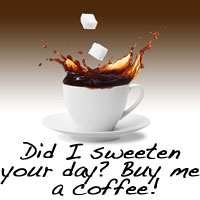by Molly Jo Realy @MollyJoRealy
It’s no secret I love nutcrackers. The music. The dolls. The ballet. The magic.

Frankly, My Dear . . . : The History of the Nutcracker
My collection ranges from a Steinbach wine maker nutcracker to a two-foot tall soldier guarding my fireplace to a two-inch tall onlooker at my work desk. With over fifty to date, I’ve yet to meet a nutcracker I haven’t liked. The diversity of their characteristics and embellishments are delightful.
My fascination grew from my love of the ballet. The classical music, the dance, Mikhail Baryshnikov.
Many years ago during one of my stints of unemployment, I happened upon a wonderful collection of nutcrackers at WalMart. They were nutcrackers fashioned after, well, The Nutcracker. There was blonde Clara, the Mouse King, the Nutcracker Prince, and my favorite: Uncle Drosselmeyer. At just $10 each, it wasn’t a terrible investment, but I couldn’t bring myself to get them. I remember telling my family how lovely they were.
Fast-forward about 36 hours and I couldn’t get them out of my head. The thing was, remember, I was still unemployed. It was about a month before Christmas and I knew if I waited patiently the store might run out before my next check came. So I stopped in at my mom’s house and asked cried begged to borrow the money so I could get them. She went into the other room which I thought was strange because it wasn’t the room she usually keeps her purse in. I heard a closet open and close, and she returned to me with a box.
Do I really have to finish this statement for y’all?
Not only did she get the four Nutcracker nutcrackers, she provided two soldier nutcrackers to guard them as well. And thus my collection began.
That was about ten years ago, and I’ve received several new nutcrackers every year since. [With fifty in the collection, that’s a duh statement!]
Nutcrackers as a tool have been around since ancient Greece. The tools resembled modern pliers or ratchets. In Victorian ages, nuts and fruits were presented on ornate trays with silver nutcrackers.
The figurative carvings have been around since the mid-15th Century. Their popularity grew toward the end of the 19th Century when the Swiss began to sell them as souvenirs. They are as symbol of luck in Germany (where Steinbachs are made).
They became popular in the US after the first US production of The Nutcracker ballet in 1940, during World War II, and as soldiers discovered the dolls.
The dolls are based on Pyotr Ilyich Tchaikovsky’s ballet, which premiered December 18, 1892. It has become one of his most renown works, celebrated and performed mostly at Christmastime, which is why the dolls are also celebrated this time of year more than any other.
Tchaikovsky had previously partnered with Marius Petipa on The Sleeping Beauty. Petipa asked Tchaikovsky to write The Nutcracker ballet with great specifics. It was based on an adaptation of “The Nutcracker and The Mouse King” by E.T.A. Hoffmann. Petipa instructed Tchaikovsky as to the tempo and length of each segment. The result is his masterpiece.
The Nutcracker music is featured in many holiday movies, events, produced in theatres worldwide, and referenced in many pieces of literature.
As I write this, I have the Baryshnikov Ballet performance on the TV for inspiration. I would like to say The Dance of the Sugar Plum Fairies is my favorite. But I’d be lying. They all are. From Clara’s dream to the Mouse King nightmare to Uncle Drosselmeyer (again).
What’s your favorite version of The Nutcracker?
With a bowl of nuts and sweets to dream,
Happy Dancing!
~Molly Jo
And Frankly, My Dear . . . : That’s all she wrote!









I remember seeing it as a child. A school trip in Toronto.
There’s been a series of performances here in recent days. I stopped in at the National Arts Centre on Saturday night before a performance to take shots around for Christmas, and a good part of their decor was Nutcracker based.
William Kendall recently posted..Ottawa Vantages